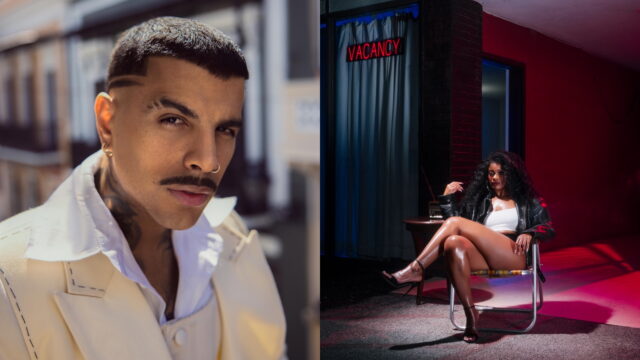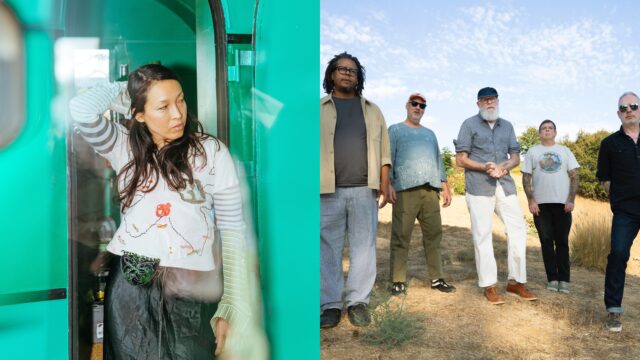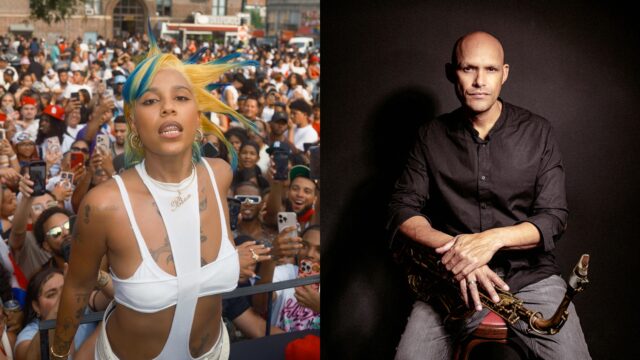Pink Floyd in ’72: Live Before ‘Dark Side’
A treasure trove of rugged concert recordings offers deep insight into the evolution of a prog-rock epic.
by Ryan Reed
Ed. note: While these recordings are no longer available on TIDAL, they continue to exist elsewhere online.
Because it still feels so enormous, both in cultural impact and psychedelic scope, it’s easy to forget that The Dark Side of the Moon didn’t just appear, monumental and monolithic, like the obelisk from 2001: A Space Odyssey.
In reality, Pink Floyd’s blockbuster eighth LP was the product of intense workshopping, having been road-tested and refined for a year-plus prior to its March 1973 release. And thanks to a new cache of well over a dozen live bootlegs and a handful of “alternate tracks” — officially, yet quietly, issued to streaming services in mid-December, most likely for copyright reasons — fans can dive into the fascinating minutiae of how this rock masterpiece evolved.
The British quartet debuted an early version in January 1972, first using the title Echoes before briefly switching to the bulkier Dark Side of the Moon: A Piece for Assorted Lunatics. That indecisiveness mirrors the music’s endless shapeshifting: While Rogers Waters’ themes of madness and mundanity were already locked in place, the arrangements on these earlier concert albums often vary wildly from the final LP.
You’ll hear major differences on nearly every track. “The Great Gig in the Sky” (originally dubbed “The Mortality Sequence” and “The Religion Song”) underwent endless sonic surgery, from altered chord progressions to tweaked vocal samples. Meanwhile, before ending up as an electronic experiment with sequenced synthesizers and white noise, “On the Run” began life as “The Travel Sequence,” a detour into heavy, jazzy space-funk.
Many of these recordings are of sub-standard fidelity, and only the most obsessive fan will enjoy trudging through the umpteenth version of “Money” just to compare David Gilmour’s guitar effects. But several transcendent performances are strewn throughout the pile. Here are 10 worth investigating.
“The Travel Sequence”
Live at the Rainbow Theatre, London 20 Feb 1972
This high-quality London boot invites a deep front-to-back listen, but several songs leap out. A dynamic version of “The Travel Sequence,” arriving between “Breathe (In the Air)” and “Time,” is powered by Gilmour’s bursts of chunky staccato guitar and Richard Wright’s shadowy Hammond organ, with Nick Mason generating plenty of heat behind the drum kit. It makes sense that they ditched “Travel” for the more avant-garde “On the Run,” but quality-wise, it’s a coin flip.
“Breathe (In the Air)”
Live at the Rainbow Theatre, London 20 Feb 1972
Don’t expect Alan Parsons-level engineering: The bass is almost nonexistent. Plus, it’s physically jarring not to hear the multi-tracked pedal steel, so essential to the album version’s lunar landscape. But it’s breathtaking how much mileage Pink Floyd got from so few tools. Here, Gilmour’s pillowy chords drift through the sky, punctuated by the velvety textures of Wright’s electric piano, and the guitarist’s signature vocal rasp — a bit strained on some of the high notes — anchors the song in human vulnerability.
“Money”
Live at the Rainbow Theatre, London 20 Feb 1972
Every riff on the Dark Side studio album is bathed in a moonlit sheen. But this live version of “Money” renders the track downright grungy, starting out as a lumbering space-blues before veering into bone-rattling distortion that conjures up a teenager’s pawnshop amp. The guitar solo is so intense, it’s like someone stuck your head inside Gilmour’s amp cabinet.
“The Mortality Sequence”
Live at the Taiikukan, Tokyo, Japan, 3 Mar 1972
On Dark Side, “The Great Gig in the Sky” reaches for the divine in an overtly physical sense, with guest singer Clare Torry moaning orgasmically over Richard Wright’s mournful piano. But this concert version lives up to the title more directly. Wright, here on organ, creates a funereal swarm of clustered notes, approximating the sound of one’s spirit slipping toward the Beyond. (Fittingly, one of the chopped-up vocal samples is a recital of the Lord’s Prayer.)

“Brain Damage”
Live at the Taiikukan, Tokyo, Japan, 3 Mar 1972
Nothing brings these psych kings down to earth more quickly than Waters starting his vocal a hair too early. And elsewhere, those chorus vocal harmonies are, to be generous, a bit shaky. But it’s fun to play this before the LP version and partake in a game of “spot the difference”: The live performance lacks the distinctive bent-note guitar leads, but it adds some ornamental organ work that highlights Floyd’s shared DNA with the Canterbury Scene.
“Time”
Live at the Hollywood Bowl, Los Angeles, 22 Sept 1972
Unlike “On the Run” or “The Great Gig in the Sky,” the widescreen arrangement for “Time” was mostly settled amid the pre-Dark Side tour, with an atmospheric intro featuring tick-tock clocks and Mason’s distinctive tom-tom flourishes. Like many of the bootleg performances, the vocals from Los Angeles are rough around the edges. (Wisely, the verse harmonies were dropped from the album recording.) But it’s a riveting live take nonetheless, with Gilmour firing out overdriven notes that strike like lightning.
“Eclipse”
Live at the Hollywood Bowl, Los Angeles, 22 Sept 1972
Waters’ reserved, clinical vocal delivery on “Eclipse” gained a crucial counterpoint on Dark Side, with a crew of singers wailing in the background. In retrospect, with that version in mind, the live arrangements feel somewhat empty. But had they decided to keep it all in-house, Pink Floyd boasted enough charisma to make it work: Onstage, Gilmour had more space to stretch out, as evidenced by his fervent vocal harmonies at the Hollywood Bowl.
“The Great Gig in the Sky”
Live at the Palais des Sports, Poitiers, France 29 Nov 1972
On this transitional version, “The Great Gig in the Sky” opens straight into a chromatic bass riff accentuated by rippling Hammond and ornate synthesizer — a much more sinister vibe than what ended up on the album. The second section, though, teases the gentler piano pattern from the studio Dark Side, but with a somewhat jazzier flair. (It’s fun to compare each arrangement of “Great Gig” throughout these bootlegs; the song was a living, breathing beast.)
“Careful With That Axe, Eugene”
Live at the Vorst Nationaal, Brussels, Belgium, 5 Dec 1972
After a main set featuring Dark Side in full, Pink Floyd dusted off a handful of wilder, freakier deep cuts for the encore in Brussels — including the psych-horror instrumental “Careful With That Axe, Eugene.” Defined, as ever, by Waters’ high-register squeals, this version is also notable for Mason’s nimble ride cymbal, Wright’s gothic Hammond and the spiraling contrails of the keyboardist’s echo-heavy synth.
“Childhood’s End”
Live at the Vorst Nationaal, Brussels, Belgium, 5 Dec 1972
According to Setlist.fm, Pink Floyd only played this Obscured by Clouds rarity at 15 shows, including a four-gig run in December 1972. (The rest came the following year.) It’s easy to see, after the release of Dark Side, why they pushed it back into the vault: The song was basically a heavier prelude to “Breathe,” built on a similar two-chord progression and sandpaper Gilmour vocal. Though the recording quality is average, this version should intrigue hardcore fans, as it flaunts a bit more aggression and bite than the album take.



